10 Best Canon Telephoto Lenses in 2024 – Reviews & Top Picks
Last Updated on

Do you want to elevate your photography skills? Getting your hands on the best Canon telephoto lens is the best way to do that.
Whether you are in sports or wildlife photography, a telephoto lens should be an imperative component of your kit. This lens helps you capture even the most distant objects without compromising details. The captured images are always sharp and detailed without you getting close to the object.
A telephoto lens is available in a wide range. You can get one starting from 70mm or easily go beyond 80mm. The variety available is vast and may confuse first-time buyers like you. However, we have done all the hard work for you.
In this review guide, dig in to read reviews on the top 10 Canon telephoto lenses available in the market. Also, explore the buying guide below for any further assistance.

A Quick Comparison of Our Favorites in 2024
| Image | Product | Details | ||
|---|---|---|---|---|
| Best Overall |
 |
Canon RF 70-200mm Telephoto Lens |
|
CHECK PRICE |
| Best Value |
 |
Canon RF800 11 IS STM(N) Telephoto Lens |
|
CHECK PRICE |
| Premium Choice |
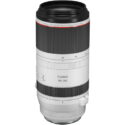 |
Canon RF 100-500mm F4.5-7.1 |
|
CHECK PRICE |
| Budget-friendly |
 |
Canon RF100-400mm F5.6-8 |
|
CHECK PRICE |
| Best for Beginners |
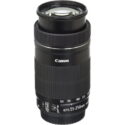 |
Canon EF-S 55-250mm |
|
CHECK PRICE |
The 10 Best Canon Telephoto Lenses
1. Canon RF 70-200mm F2.8 L IS USM Telephoto Lens–Best Overall
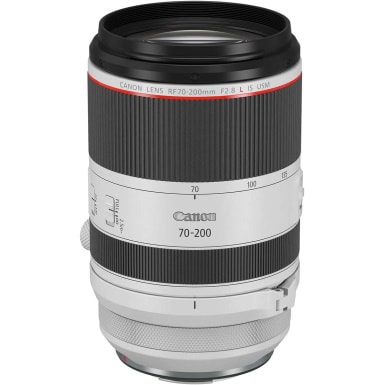
| Weight: | 2.64 pounds |
| Dimensions: | 3.5 x 3.5 x 5.7 inches |
| Maximum aperture: | 200 millimeters |
| Focal length: | 200 millimeters |
Sports photography can sometimes become quite challenging, especially if you are standing on the extreme end of a court or pitch. To overcome this hurdle, a good-quality telephoto lens works like magic. For many reasons, the RF 70-200MM USM telephoto lens is our best overall Canon telephoto lens.
For starters, it is a lightweight and compact lens that is pretty easy to work with. You can carry it around on your expeditions without feeling burdened.
It also captures high and bright quality images using its f/2.8 aperture. So even if you have dark surroundings or the object is away from your reach, this lens makes sure not to disappoint you with its exceptional performance.
This lens is compatible with all the Canon full-frame mirrorless cameras. It has quiet and smooth autofocus and excellent image stabilization to correct unnecessary blurriness in your pictures. The only downside of this lens is that it isn’t quite compatible with any teleconverter on the market.
- Lightweight and compact
- Produces high-quality results
- Perfect for full-frame cameras
- Provides excellent stabilization
- Not compatible with teleconverters
2. Canon RF800/11 IS STM(N) Telephoto Lens–Best Value
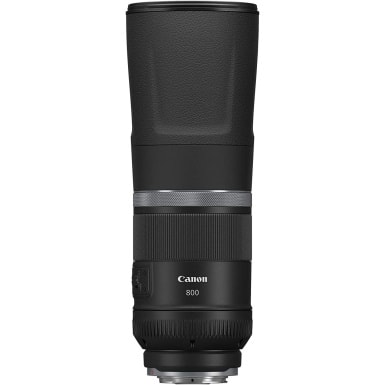
| Weight: | 3.53 pounds |
| Dimensions: | 15.4 x 6.7 x 6.5 inches |
| Maximum aperture: | 11 millimeters |
| Focal length: | 800 millimeters |
If you are looking for the best Canon telephoto lens for the money, the Canon RF800/11 IS STM(N) lens may tick all the right boxes for you. This lens has a focal length of 800 millimeters, which is quite rare at this price. Canon often makes such lenses but not at a price as low as this one.
This lens is quite sharp, lightweight, and compact. It also offers excellent image stabilization and autofocus. What’s more, it is also compatible with teleconverters. The lens features gap-less diffractive optics that decrease chromatic aberration and ensures better quality results every time.
It does have a few shortcomings, though. For instance, the lens requires a lot of light to optimize its autofocus performance. It also doesn’t come with a weather-sealing, so you can’t use it during rain. Besides that, it serves well despite its low price and can be an excellent option for wildlife photographers.
- Excellent value for money
- Compact and lightweight lens
- Compatible with teleconverters
- Excellent image stabilization
- Doesn’t come with a weather sealing
- Requires lots of light to perform well
3. Canon RF 100-500mm F4.5-7.1 L USM Telephoto Lens–Premium Choice
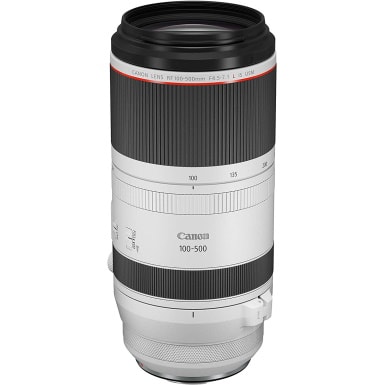
| Weight: | 5.05 pounds |
| Dimensions: | 9.1 x 9.1 x 9.1 inches |
| Maximum aperture: | 54 millimeters |
| Focal length: | 100 millimeters |
If budget isn’t an issue and you are looking for a premium quality telephoto lens by Canon, the Canon RF 100-500mm F4.5-7.1 L might be a good choice. It is a pricey option, but that’s what most premium things are, right?
This lens can make all your wildlife photography dreams come true. Thanks to its versatility, the lens offers optimal image stabilization, providing excellent shake correction. You can benefit from the three stabilization modes to add creativity to your results.
The lens uses dual Nano USM that enhances smooth, quiet, and high-speed autofocus for excellent outcomes every time. It also features a control ring that allows you to adjust the exposure per your required settings conveniently.
You might be disappointed by the lens’ slow aperture, but you shouldn’t, as this lens isn’t constrained by light and offers full focus. This lens is an appropriate option for handheld photography as its performance and handling efficiently overshadow its predecessors.
- Versatile lens
- Comes with three stabilization modes
- Excellent autofocus features
- Can be used to adjust exposure conveniently
- Comparatively slow aperture
4. Canon RF100-400mm F5.6-8 IS USM Telephoto Lens- Budget-friendly
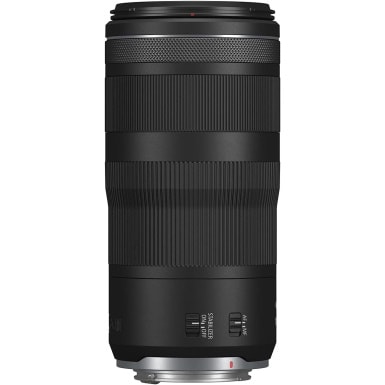
| Weight: | 1.4 pounds |
| Dimensions: | 6.5 x 3.1 inches |
| Maximum aperture: | 45 millimeters |
| Focal length: | 400 millimeters |
One of the most significant issues with Canon telephoto lenses is their high price. Unfortunately, not everyone’s budget allows them to invest in a pricey lens, and if you have the same problem, this recommendation may work for you. The Canon RF100-400mm F5.6-8 IS USM telephoto lens is a budget-friendly option that breaks the price barrier without compromising quality and performance.
This lens packs excellent features that support its high-quality performance. For instance, it is lightweight and compact, meaning you can carry it everywhere. It also has a superb zoom range of 100–400 mm, offering an all-rounder photography experience.
The image stabilizer enhances shake correction, while the Canon’s Nano USM enhances the smoothness and quietness of autofocus. Since this is a budget-friendly option, it lacks proper weather-proof sealing. It also has a comparatively slow aperture.
But these downsides are easily covered by the lens’s lightweight and small stature. It isn’t one of the top-performing lenses in the market, but it definitely suits more beginners and photographers on a tight budget.
- Budget-friendly lens
- Lightweight and compact design
- Excellent image stabilization
- Small stature enhances portability
- Can be appropriate for beginners
- Slow aperture
- Doesn’t come with a weather-proof sealing
5. Canon EF-S 55-250mm F4-5.6 IS STM–Best for Beginners
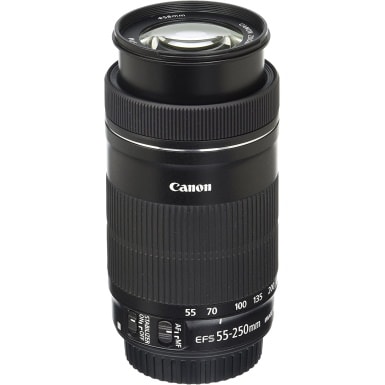
| Weight: | 0.83 pounds |
| Dimensions: | 4.37 x 2.76 x 2.76 inches |
| Maximum aperture: | 5.6 millimeters |
| Focal length: | 250 millimeters |
Raise your hand if you have just ventured into photography and are looking for a lightweight yet easy-to-use telephoto lens for your camera. The Canon EF-S 55-250mm F4-5.6 IS STM lens is an affordable option and has all the qualities of high magnification and lightweight zoom lenses. This product has excellent image stabilization that prevents blurry results, regardless of your first try at photography.
What’s more, you get high contrast and resolution thanks to this lens that decreases Chromatic Aberration with every shot. It also has a unique zoom system that achieves maximum magnification. This lens has all the compatible features to help you flourish as an artist, but unfortunately, it doesn’t come with a hood, and you will have to get one separately.
- Lightweight with a high magnification
- Excellent image stabilization
- High contrast and resolution
- Unique zoom system
- Doesn’t come with a lens hood
6. Canon EF 75-300mm f/4-5.6 III Telephoto Lens
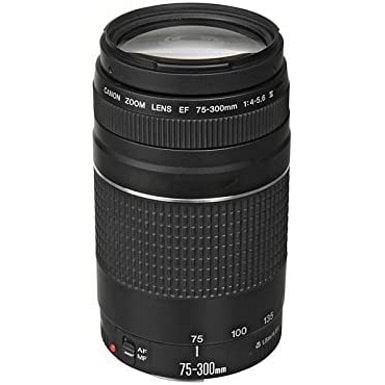
| Weight: | 1.06 pounds |
| Dimensions: | 4.8 x 2.8 x 2.8 inches |
| Maximum aperture: | 4 millimeters |
| Focal length: | 75 millimeters |
This fantastic telephoto lens offers an excellent zoom variety that enhances the quality of results you achieve. The Canon EF 75–300mm f/4-5.6 III telephoto lens is an ideal product for people looking to capture some action as it is designed for nature and wildlife photography.
It has an excellent autofocus function and can easily track movement with its high-speed performance. It doesn’t come with tripods or weather sealing. But despite these shortcomings, it still captures an image worth every praise.
The lens’ image stabilization is quite impressive as well. It helps shoot all kinds of action with precision, so the results are exactly how you may have perceived them.
This lens is incredibly lightweight and has an LCD. This additional feature helps adjust the focal length and telegraphs other imperative information.
The only downside of this option is its expensive cap. While the lens price is pretty competitive, the pricey cap might be a huge bummer. Otherwise, the entire package is commendable and worth trying your hands on.
- Versatile lens
- Commendable with tracking movement
- Precision results
- Comes with an LCD
- Affordable price
- Comes with a pricey lens cap
7. Canon RF70-200mm F4 L IS USM Telephoto Lens-Smallest Full-frame Lens
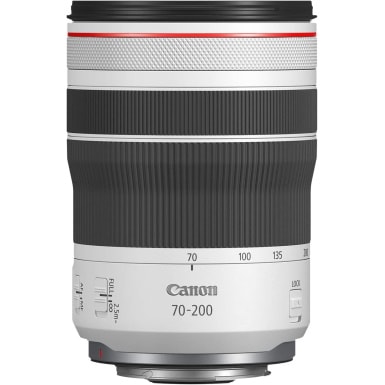
| Weight: | 1.53 pounds |
| Dimensions: | 6.6 x 10.2 x 5.8 inches |
| Maximum aperture: | 200 millimeters |
| Focal length: | 200 millimeters |
This recommendation is the smallest full-frame lens available by Canon and is lightweight and sharp. When fully collapsed, the lens is the same size as a soda can, but that doesn’t restrict it from performing way better than most high-end and large lenses.
The Canon RF70-200mm F4 L IS USM telephoto lens delivers 7.5 stabilization stops that help it to be versatile for different shooting ranges. It has an excellent center and optical sharpness, enhancing the quality of results every time. You might find its corner sharpness a little disappointing, but it can be improved with lots of practice.
The lens uses dual Nano USM that enhances autofocus. So, when focusing, the lens helps you get quiet yet smooth results, regardless of any extra effort.
Overall, this lens is worthy of being on this list. However, it isn’t compatible with teleconverters which might be pretty frustrating for a few of you.
- Smallest full-frame lens with excellent performance
- Good number of stabilization stops
- Offers optical sharpness
- Excellent autofocus
- Not compatible with teleconverters
- Lacks corner sharpness
8. Canon EF 100-400mm f/4.5-5.6L IS II USM Telephoto Lens-Best for Professionals
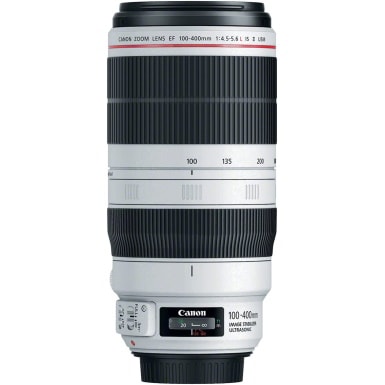
| Weight: | 3.46 pounds |
| Dimensions: | 7.6 x 3.7 x 3.7 inches |
| Maximum aperture: | 40 millimeters |
| Focal length: | 400 millimeters |
The Canon EF 100-400mm f/4.5-5.6L IS II USM telephoto lens is an excellent recommendation for people who have been part of the photography industry for some time. This product is designed for professionals who want to ace wildlife and sports photography.
There are many features that make this high-end lens pretty incredible. For starters, it comes with a zoom ring that easily rotates, giving you excellent balance and precision while handling this lens. The ring has an improved zoom torque adjustment that helps you conveniently adjust the focal length, zoom tension, and maximum aperture.
This lens has a new, updated sphere coating that significantly decreases gloating and flaring. The coating is also highly resistant to water and dust. Plus, it provides incredible durability to the frame, making it easy to be used during harsh weather conditions.
This lens is pricey, though. However, if all the additional features help you improve your photography skills, there is no reason not to get this lens on board. It works well for professionals who want to amp up their photography game.
- Ideal for professionals
- Zoom ring enhances balance
- Sphere coating enhances durability and prevents ghosting
- Ideal for sports and wildlife photography
- Expensive lens
9. Tamron SP 70-300mm Telephoto Lens-Best Canon Alternative
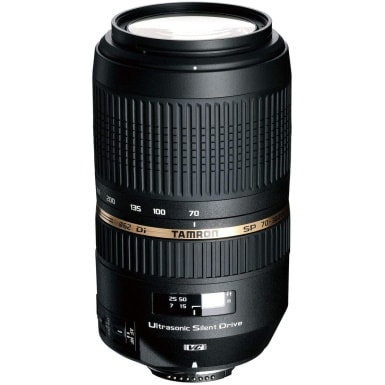
| Weight: | 1.69 pounds |
| Dimensions: | 5.62 x 3.21 x 3.21 inches |
| Maximum aperture: | 5.6 millimeters |
| Focal length: | 300 millimeters |
If you don’t find a suitable canon lens for your camera, you can opt for an alternative. The Tamron SP 70-300mm is an excellent option for a telephoto lens.
Although it is expensive, it offers good stabilization and autofocus. Better handling enhances performance, and as a result, you experience crystal clear images every time. A focus-distance scale improves the quality of results, and you always attain precision.
This lens also doesn’t have weather sealing. However, it is still well-built and comes with a durable hood. Tamron is a well-received brand with excellent customer service, so it may be a great option if you want to try it out.
- Ideal alternative for canon lenses
- Good autofocus and stabilization
- Focus-distance scale achieves precision
- No weather sealing
- Expensive option
10. Tamron 100-400mm F/4.5-6.3 VC USD Telephoto Lens-Lightweight
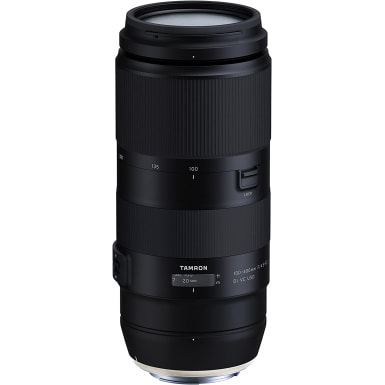
| Weight: | 2.45 pounds |
| Dimensions: | 7.8 x 3.4 x 3.4 inches |
| Maximum aperture: | 4.5 millimeters |
| Focal length: | 400 millimeters |
If you want to experience incredible reach within your restricted budget, the Tamron 100-400mm can be an incredible option. This is one of the brand’s most lightweight lenses and a pretty competent one. Moreover, this is an ultra-telephoto lens with excellent image quality.
Another great thing about this lens is its unique eBAND coating that reduces coating and flare. It also features four-stop image stabilization to help you with handling and enhance your telephoto shooting experience.
Unlike most lenses, this option comes with a moisture-resistant construction to give you enhanced protection against bad weather. The fluorine coating also plays a primary role in protecting your lens from external factors.
- Excellent reach
- Comes with an excellent weather-proof construction
- Coating prevents ghosting and flare
- Reasonably priced
- Doesn’t come with a mounting ring

Buyer’s Guide: Finding the Best Telephoto Lens
If this is your first time buying a telephoto lens, you may get overwhelmed by the above-mentioned options. Some lenses sound great, but they may not be appropriate for your camera. To pick a reasonable option, you need to know more about the lens and its primary component.
Dig into this buying guide and find the assistance that you may require to save your money from getting wasted.
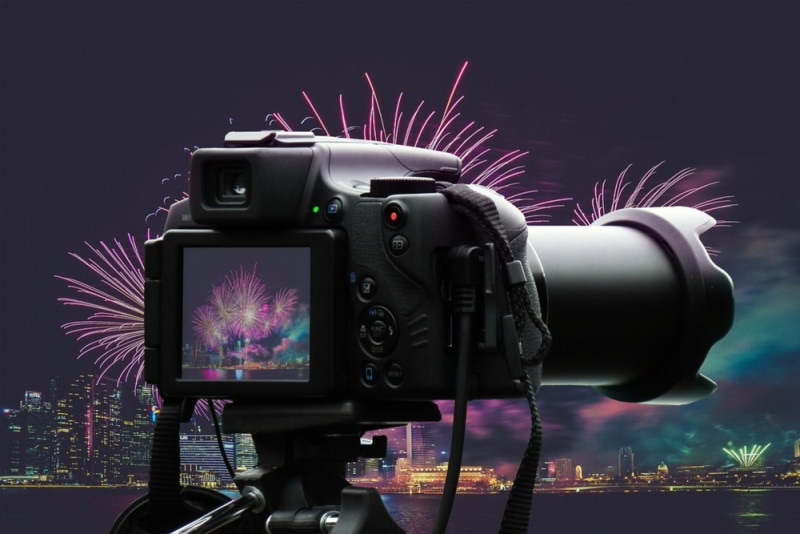
What Is a Telephoto Lens?
A telephoto lens is a technological invention designed to capture things from a distance. Since it features a long focal length, it is an excellent option for wildlife and sports photography.
Many photographers also use this lens when they need to zoom into a particular subject where it is hard to get closer. For instance, during concerts, it gets pretty hard to capture the center stage all the time, and in that case, this lens works wonders even if you are standing away at a distance.
Another great thing about a telephoto lens is that it takes images with all the detailing. As a result, regardless of the distance between your camera and the object, the images produced are often precise and crystal clear. Most telephoto lenses also have better stabilization than normal lenses, making them easy to handle and reducing the chances of blurry results.
Advantages of Getting a Telephoto Lens
You may wonder about the reasons for getting a telephoto lens. Below are a few advantages to convince you of its goodness and performance.
- A telephoto lens helps capture objects from a distance. This is a great relief for all the photographers in sports or wildlife photography.
- Unfortunately, many lenses experience extreme stabilization issues that result in blurry images. However, that’s not the case with telephoto lenses. They help reduce unnecessary camera shake even during lowlights and allow the results to turn out crystal clear every time.
- Most high-quality lenses have solid and weatherproof construction. This factor helps you capture videos and photos despite the environment.
- You can easily use a telephoto lens to achieve an up-close view of anything around you.
- This lens also helps you capture moving objects. Unfortunately, motion is the biggest challenge in any type of photography; however, this lens allows you to overcome that.
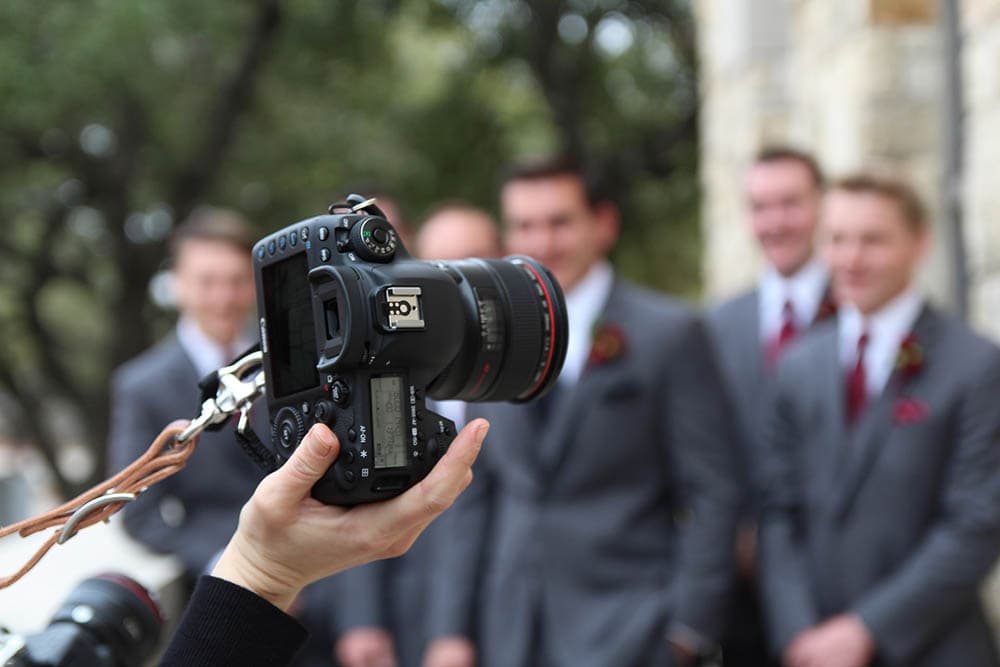
Choosing the Best Telephoto Lens
When choosing a telephoto lens, here are a few imperative factors to consider before you pick your final choice:
Image Quality
Whenever a photographer buys a lens, their primary aim is to attain a high image quality with less effort. This is essential; therefore, you need to check the quality of results that your lens produces before spending money on it.
Image quality can only be tested using the lens with your hands first. If you are buying a lens online, read expert recommendations and customer feedback to have an idea.
Focal Length
When choosing a telephoto lens, don’t ignore its focal length. The focal length of a lens allows you to understand the angle of your view and the amount of scene you can capture within one click. It also tells you about magnification, which means how large the elements will appear.
For a telephoto lens, choose one with a long focal length. A long length produces a narrow angle and increases the magnification. This results in a clear and well-detailed image.

Weight
If you are into wildlife photography or just photographing events, you may have to spend hours or days holding your camera in your hand to achieve the perfect moment. This could be a hectic job, especially if you are doing it all yourself. In that case, invest in lightweight gear to avoid poor quality results.
Luckily, telephoto lenses are available in different weight ranges, so you have many options to choose from. Only make sure that the choice you pick is compatible with your camera.
Durability
Durability is vital if you want your lens to last for an extended period. Durable lenses with moisture-resistant constructions are not only long-lasting but can stay perfect in your bag even on extended travels. Also, if they drop, you don’t have to worry about them getting broken easily.
Other Features
Invest in a camera with excellent image stabilization. This feature is again imperative to reduce the chances of blurry results.
Most lenses come with impeccable autofocus. Your lens needs to have an excellent focus quality so you can easily capture objects from a long distance.
Always invest in a lens that has proper weather sealing. This is important to keep it safe during harsh weather conditions. If your chosen lens doesn’t come with a seal, get one that at least has a hood to keep it safe during rain or storms.
Most lenses come with a coating. While such extra features increase their prices, they help retain the performance of your lens for an extended time. In addition, a high-quality coating prevents flare and ghosting and simultaneously enables you to capture excellent images.
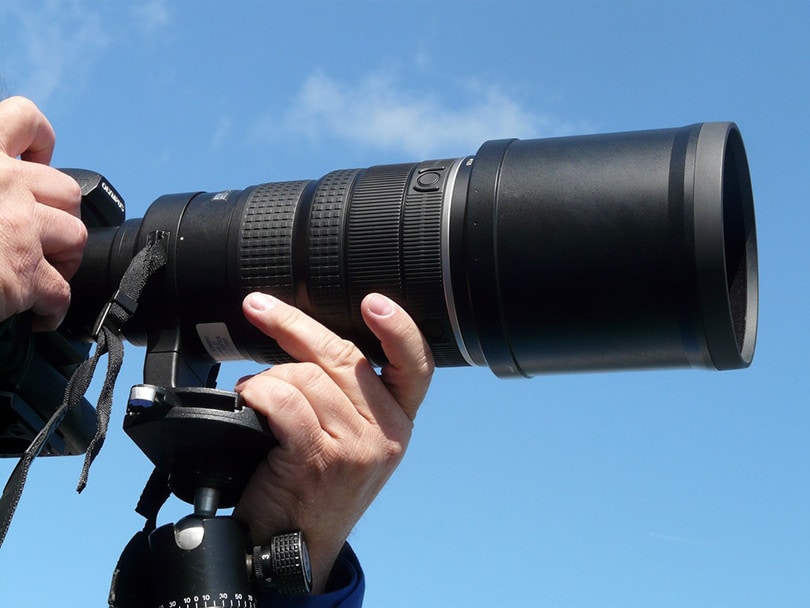
Price
You need to be careful about your budget when picking a lens. Telephoto lenses are relatively more expensive than normal lenses. However, they are available within a wide price range, so everyone has an option.
If you have a tight budget, don’t go overboard and explore our affordable options from the list above. Similarly, if you have a reasonable budget, spend well.
This is because most high-priced lenses are not only more durable but also have many unique features that can help you attain the results of your dreams. Make sure to keep a balance between performance and price to avoid any regrets later.

Conclusion
A telephoto lens can easily amp up your photography game. It allows you to capture objects at a distance and zoom in on things that your standard lens may find hard to photograph. If you are into wildlife or sports photography, it is worth a telephoto lens for your desired results.
Our top pick from our above reviews is the Canon RF 70–200mm F2.8 L telephoto lens. It is a compact and lightweight lens and also provides excellent image stabilization.
Our second favorite option is the Canon RF100–400mm F5.6-8 for everyone on a tight budget. Of course, the final choice is yours, so best of luck.
Featured Image Credit: goodluz, Shutterstock
Table of Contents
- A Quick Comparison of Our Favorites in 2024
- The 10 Best Canon Telephoto Lenses
- 1. Canon RF 70-200mm F2.8 L IS USM Telephoto Lens–Best Overall
- 2. Canon RF800/11 IS STM(N) Telephoto Lens–Best Value
- 3. Canon RF 100-500mm F4.5-7.1 L USM Telephoto Lens–Premium Choice
- 4. Canon RF100-400mm F5.6-8 IS USM Telephoto Lens- Budget-friendly
- 5. Canon EF-S 55-250mm F4-5.6 IS STM–Best for Beginners
- 6. Canon EF 75-300mm f/4-5.6 III Telephoto Lens
- 7. Canon RF70-200mm F4 L IS USM Telephoto Lens-Smallest Full-frame Lens
- 8. Canon EF 100-400mm f/4.5-5.6L IS II USM Telephoto Lens-Best for Professionals
- 9. Tamron SP 70-300mm Telephoto Lens-Best Canon Alternative
- 10. Tamron 100-400mm F/4.5-6.3 VC USD Telephoto Lens-Lightweight
- Buyer’s Guide: Finding the Best Telephoto Lens
- Conclusion
About the Author Jeff Weishaupt
Jeff is a tech professional by day, writer, and amateur photographer by night. He's had the privilege of leading software teams for startups to the Fortune 100 over the past two decades. He currently works in the data privacy space. Jeff's amateur photography interests started in 2008 when he got his first DSLR camera, the Canon Rebel. Since then, he's taken tens of thousands of photos. His favorite handheld camera these days is his Google Pixel 6 XL. He loves taking photos of nature and his kids. In 2016, he bought his first drone, the Mavic Pro. Taking photos from the air is an amazing perspective, and he loves to take his drone while traveling.
Related Articles:
How to Clean a Refractor Telescope: Step-by-Step Guide
How to Clean a Telescope Eyepiece: Step-by-Step Guide
How to Clean a Rifle Scope: 8 Expert Tips
Monocular vs Telescope: Differences Explained (With Pictures)
What Is a Monocular Used For? 8 Common Functions
How to Clean a Telescope Mirror: 8 Expert Tips
Brightfield vs Phase Contrast Microscopy: The Differences Explained
SkyCamHD Drone Review: Pros, Cons, FAQ, & Verdict



